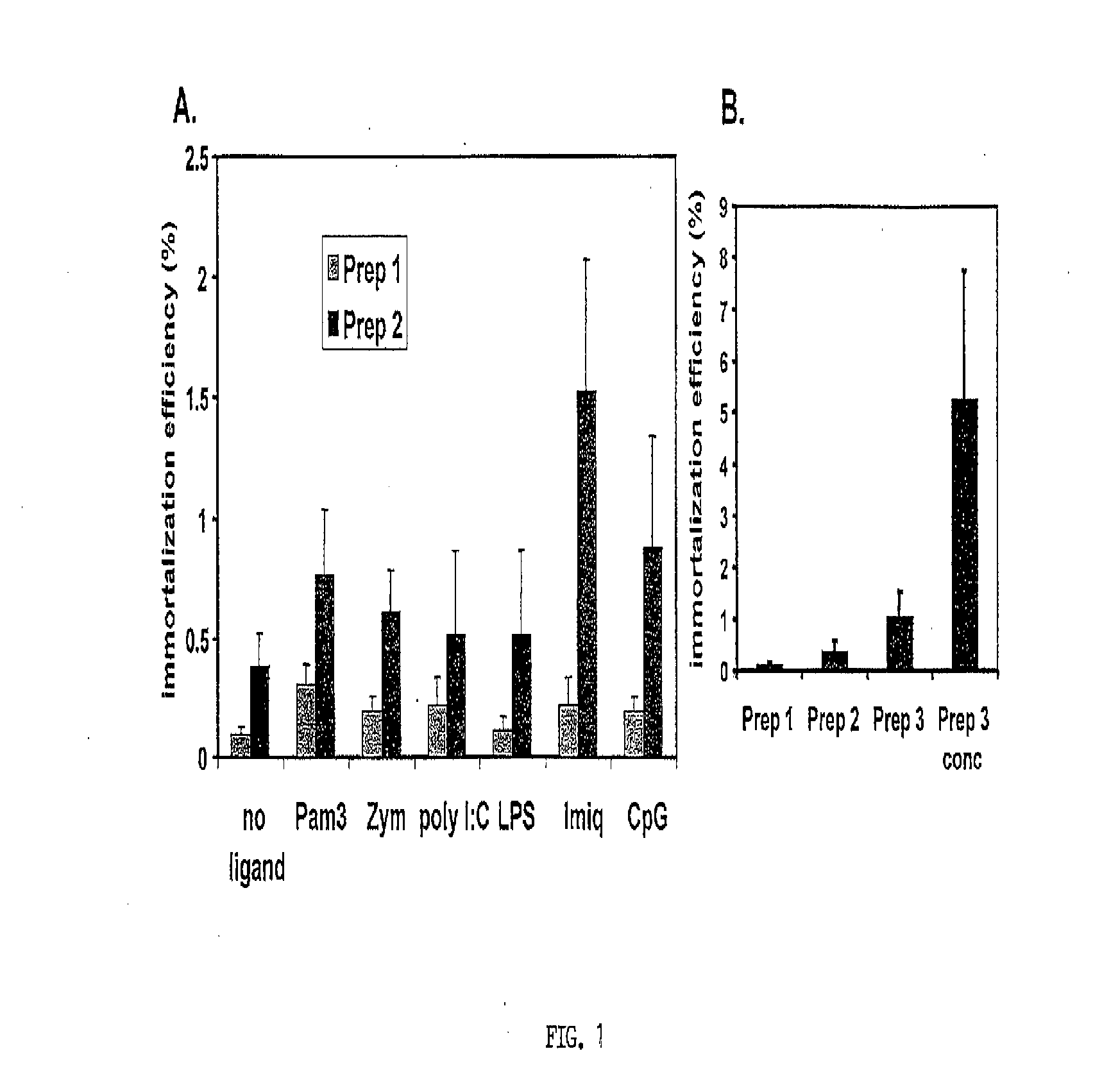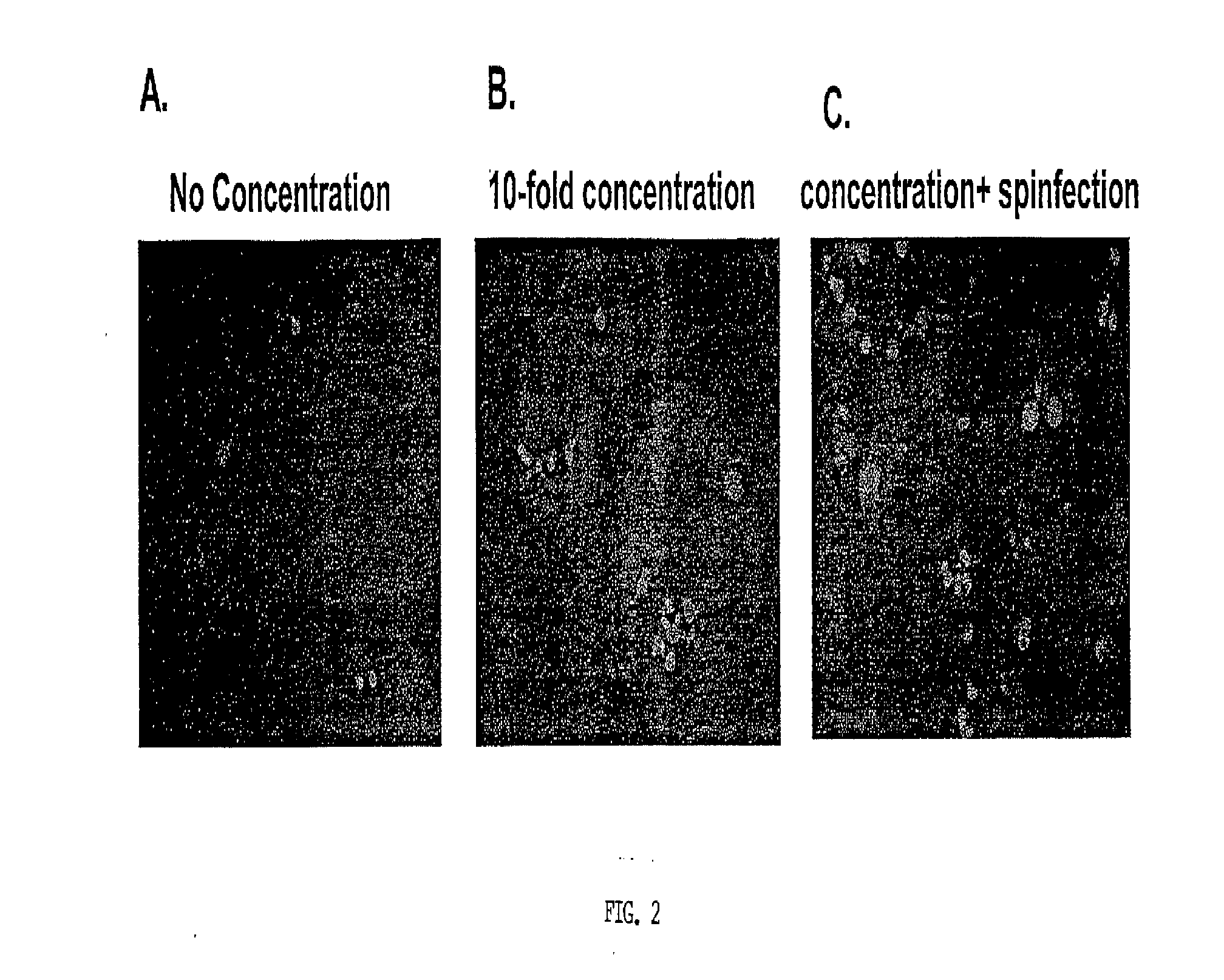Human monoclonal antibodies and methods for producing the same
- Summary
- Abstract
- Description
- Claims
- Application Information
AI Technical Summary
Benefits of technology
Problems solved by technology
Method used
Image
Examples
example 1
Materials & Methods for B-Cells Reactive to H5 HA
[0147]Isolation and culture of tonsil B cells. To prepare B cells from tonsils, tonsil tissue was placed inside a sterile Petri dish (VWR International, cat. #25384-088) containing 20-30 ml Dulbecco's phosphate buffered saline (DPBS, without CaCl2 or MgCl2; Gibco / Invitrogen, Grand Island, N.Y. cat. #14190144) supplemented with 1× Antibiotic-Antimycotic (Gibco / Invitrogen cat. #15240-062). The tissue was chopped and minced with scalpels to approximately 1 mm3 pieces. Additional lymphocytes were released by gentle grinding of tonsil pieces between the frosted glass surfaces of two sterile microscope slides (VWR cat. #12-550-34), and single cell preparation was made by straining through 70 μm nylon strainer (BD Falcon, cat. #352350, BD Biosciences, Two Oak Park, Bedford, Mass.). This suspension was layered onto a Ficoll (Amersham Biosciences cat. #17-1440-03, Uppsala, Sweden) cushion (35 ml sample over 15 ml Ficoll) and resolved at 1500 G...
example 2
Results for B Cells Reactive to H5 HA
[0165]Toll-Like Receptor (TLR) ligands and EBV concentration did not significantly improve EBV infectivity. Traggiai et al. (2004) reported that addition of at least one TLR ligand (CpG) to cultured memory B cells could enhance EBV infection efficiency. Since naïve B cells express several TLR (Bourke et al., 2003) it was reasonable to assess the effect of several TLR ligands on EBV infection of naïve B cells. Primary B cells were incubated overnight with either Pam3 (Pam3Cys-Ser-(Lys)4) (0.5 μg / mL), zymosan (1 μg / mL), Poly I:C (polyinosinic-polycytidylic acid) (25 μg / mL), LPS (lipopolysaccharide) (5 μg / mL), Imiquimod (1 μg / mL), CpG (10 μg / mL), or no ligand. These are synthetic proteins that mimic common pathogenic antigens. Each of these activates different innate immune pathways in B-cells. Lipopeptide Pam3 (Hamilton-Williams et al., 2005) binds TLR 2 and 1, zymosan (a yeast cell wall component prepared from Saccharomyces cerevisiae) binds TLR 2...
example 3
Materials & Methods for Producing Human B-Cells Secreting Monoclonal Antibodies Reactive with SEB, SEC-2, PLGF, and Ricin B Chain
[0191]Creation of immortalized tonsil repertoires. Generation of concentrated EBV stocks and preparation of B cells from tonsil tissue have been described in Examples 1 and 2. No changes have been made to these methods. For induction of differentiation of EBV immortalized B cells, the inventors used complete RPMI medium (Gibco) supplemented with 10% FBS (Hyclone) containing soluble CD40 ligand (5 ng / ml), BAFF (10 ng / ml), and goat anti-human IgM F(ab′)2 (1.62 ng / ml), as previously described.
[0192]Sample collection for ELISA analysis. Collection and screening of sample culture supernatants for antigen reactivity by ELISA have been modified as follows. Culture supernatants were collected into corresponding wells on a 96-well plate on day 10-14 post-transduction at 100 μl from each well, and aliquots were pooled (30 μl of supernatant from all wells on each pla...
PUM
| Property | Measurement | Unit |
|---|---|---|
| Time | aaaaa | aaaaa |
| Time | aaaaa | aaaaa |
| Time | aaaaa | aaaaa |
Abstract
Description
Claims
Application Information
 Login to View More
Login to View More - R&D
- Intellectual Property
- Life Sciences
- Materials
- Tech Scout
- Unparalleled Data Quality
- Higher Quality Content
- 60% Fewer Hallucinations
Browse by: Latest US Patents, China's latest patents, Technical Efficacy Thesaurus, Application Domain, Technology Topic, Popular Technical Reports.
© 2025 PatSnap. All rights reserved.Legal|Privacy policy|Modern Slavery Act Transparency Statement|Sitemap|About US| Contact US: help@patsnap.com



